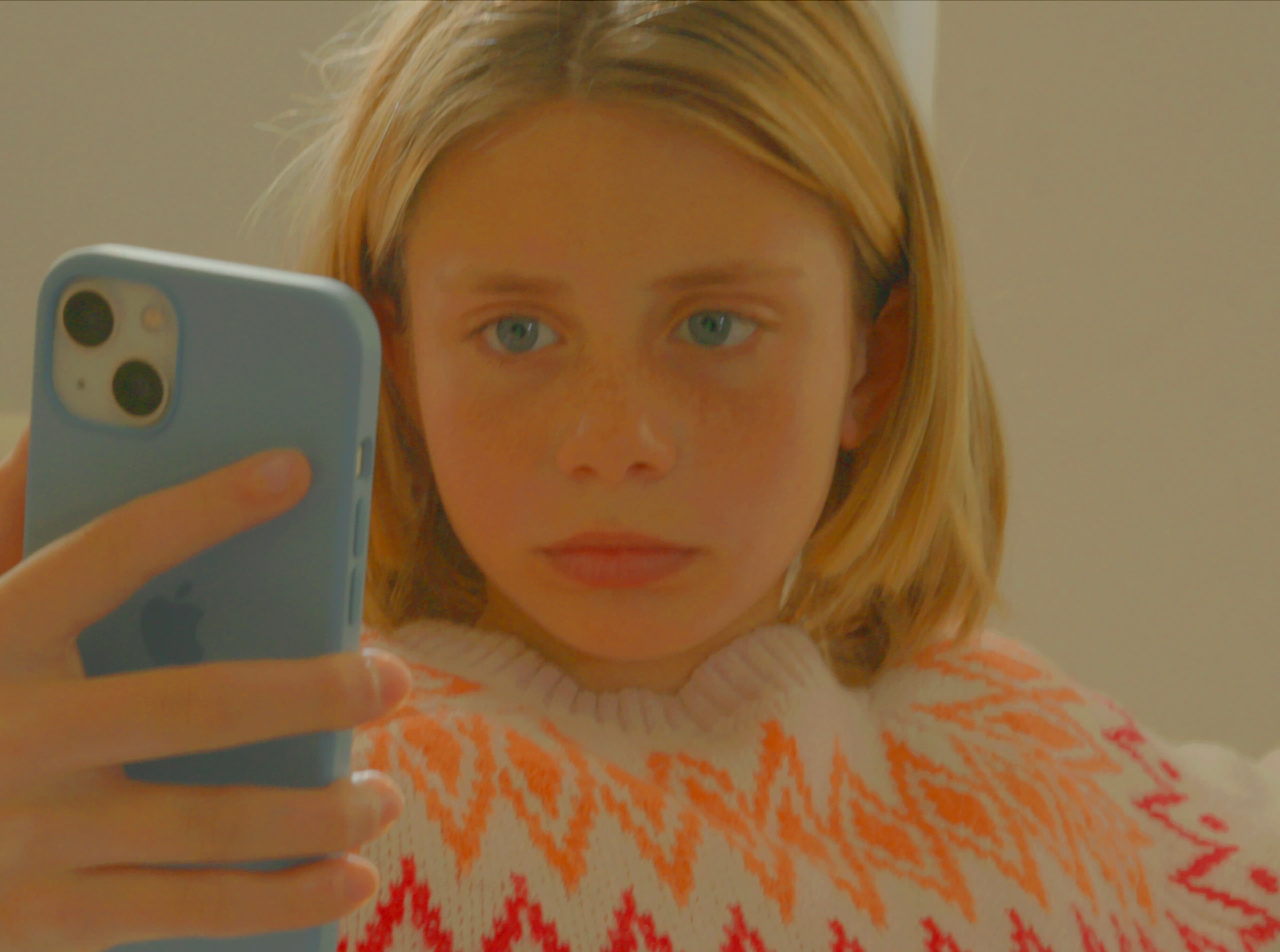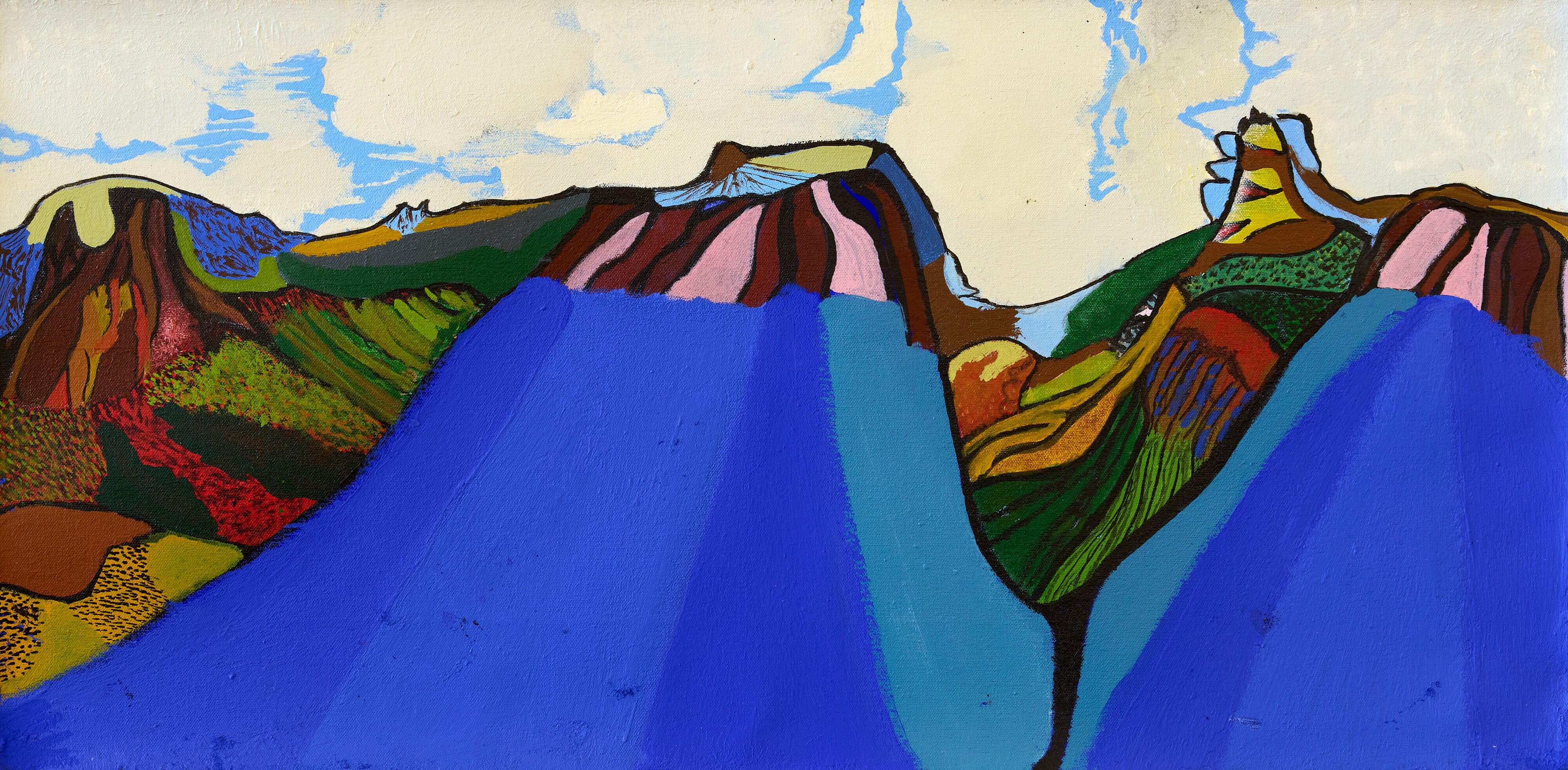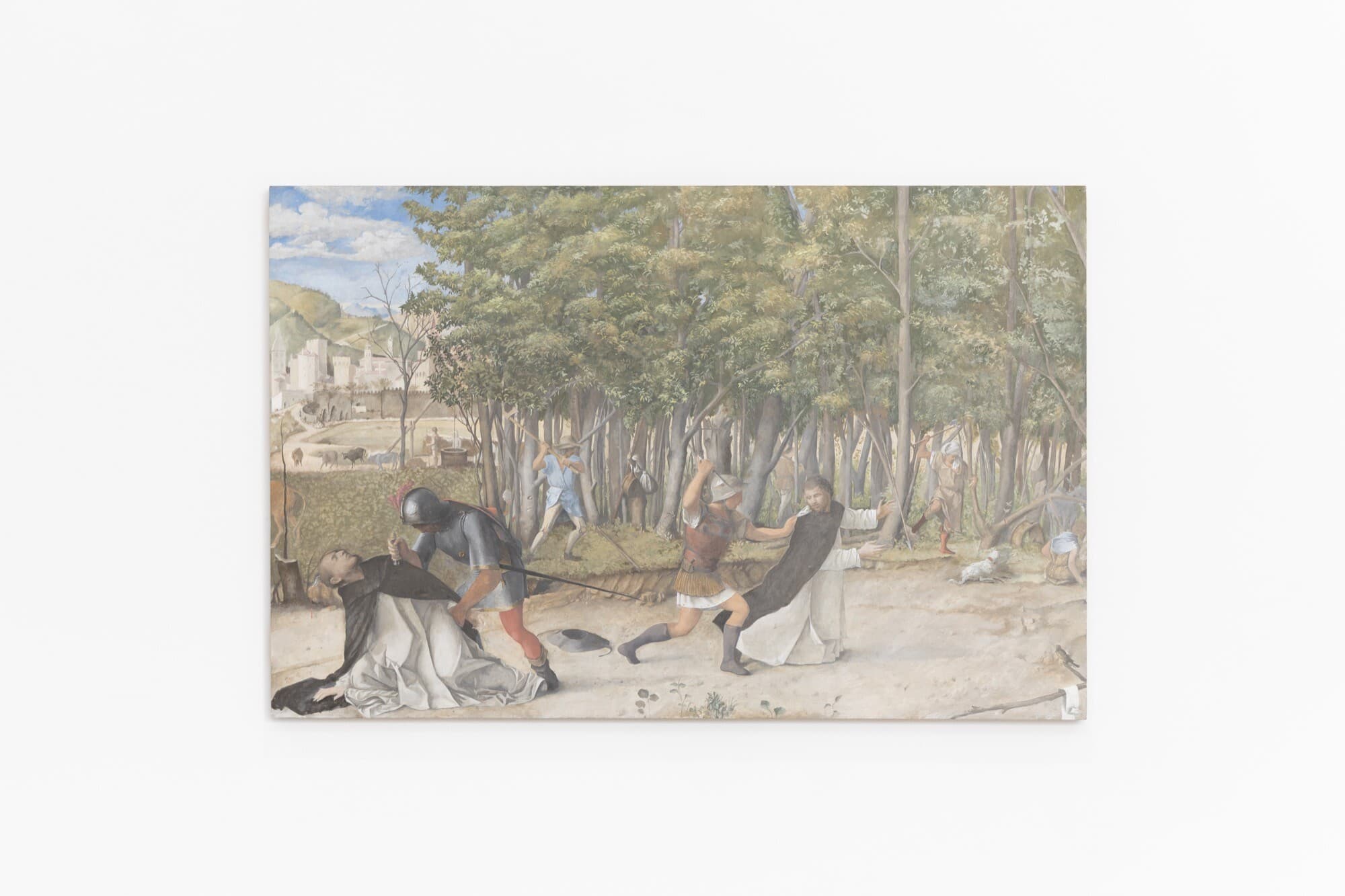Martin Grant and Polly Borland (photographer), Habiller deshabiller (to dress, to undress), 1994. Courtesy of Polly Borland and Sullivan and Strumpf.
Martin Grant
Sebastian Moore
Fashion, even more so than art, has a propensity for myth-making. With the ubiquity of fashion brands, it’s not just the name that inspires aspiration; it’s the story behind the name that truly captures the public’s imagination. It is this air of mythos that simmers beneath the surface of the National Gallery of Victoria’s latest fashion survey, Martin Grant. Whilst Martin Grant mightn’t be a household name in Australian fashion—perhaps we are not yet a country of fashion houses—this exhibition strives to make his name known, highlighting the indisputable talent and silent influence of Grant’s work over the past thirty years. Featuring a plethora of pieces that the designer gifted to the gallery, the exhibition unfolds as a story, a parable of sorts, following the young protégé from his early days in Blackburn to the grungy streets of Melbourne in the ’80s, where he cut his teeth as a designer and sculptor, before landing in Paris and the glittering world of the international fashion scene. Like every good fashion exhibition, it contains the necessary glamour and celebrity. There is certainly no doubt that these are beautiful clothes for beautiful people. But when one tires of taffeta, what exactly does an exhibition like this tell us? What meaning does it serve beyond unfolding the myth of its creator?
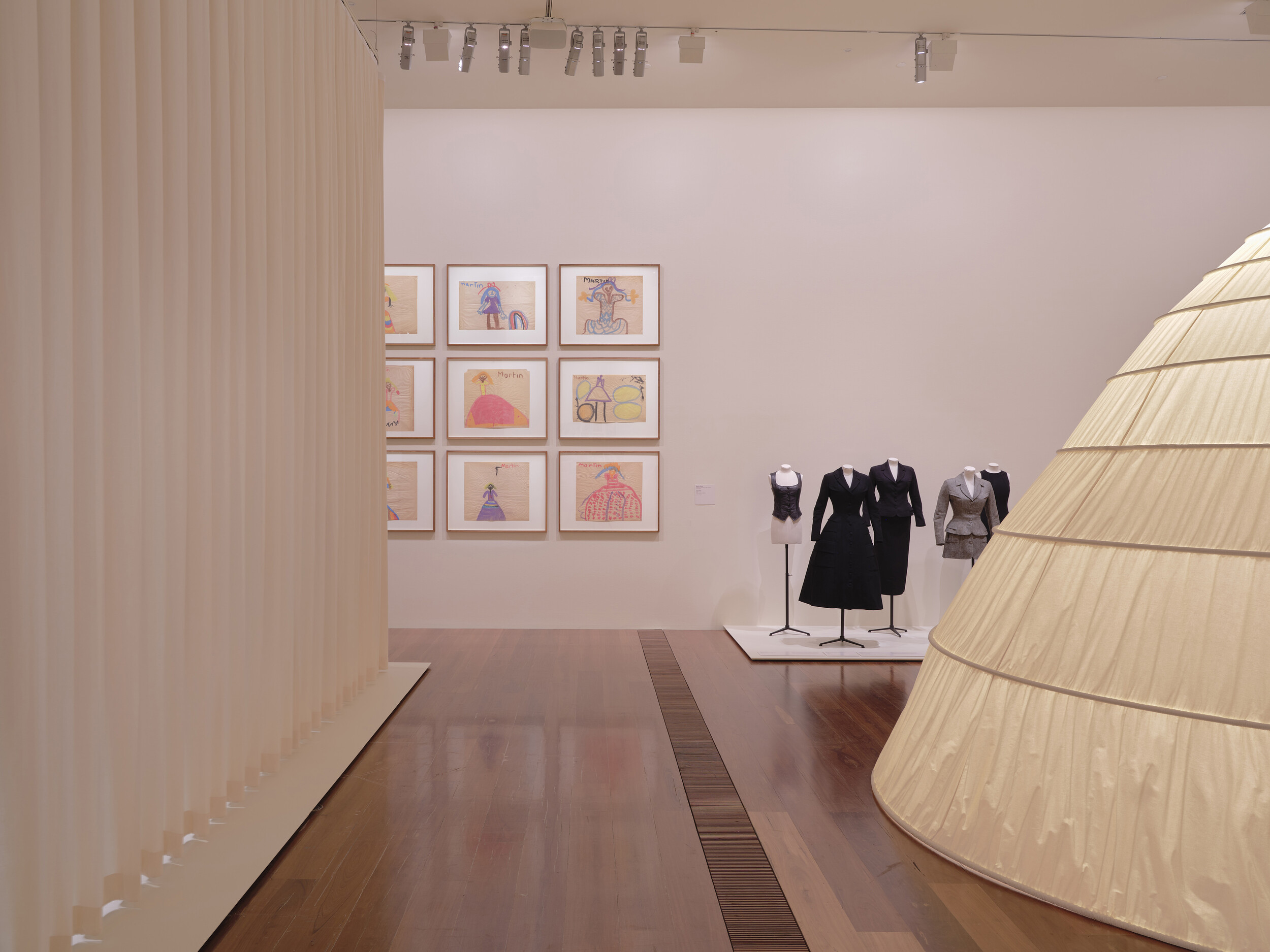
Installation view of Martin Grant at The Ian Potter Centre: NGV Australia, Melbourne. Photo: Sean Fennessy
The first space in the exhibition evokes Grant’s atelier and traces his early design work from the 1980s and 1990s. Hanging curtains of cream calico—material used in the draping stage of dress-making—partition this space, where early design experiments are shown against sketches, press-clippings, and mood boards. At the centre of this creative womb, an igloo-like crinoline from Grant’s 1994 installation To Dress, To Undress is illuminated and serves as a talisman underscoring Grant’s enduring fascination with the sculptural qualities of fashion. It is in the first room that the audience is introduced to the codes of Grant’s work, which reverberate through the exhibition—his preference for sculptural form, precise tailoring, and a restrained elegance. These codes become markers of Grant’s vision for fashion, one informed by a sensuous modernity with an undying deference to a sort of old-world glamour. We see this best in a selection of black coats that form the DNA collection (2021), where the designer’s varied take on the coat at once reveals the variability of the form, but also the process of subtle subversion that can be applied to a garment, when one takes something traditional and reinvents it.
While Grant’s work is minimal, his designs never appear pointlessly modern. They are grounded in the dialogue of historical references. In 1999, he created his Napoleon Collection—a charming play on the bell-shaped form of eighteenth-century French military garments, renegotiating the sturdy form with a feminine embrace. The militaristic power of clothing as armour is also expressed in his Joan of Arc Dress (Autumn Winter 1999), worn by Cate Blanchett. Complex panel work, with raised ridges at the seam, evokes the boyish panelling of armour. If you know what to look for, the references blossom from the work, but Grant’s skill lies in resisting the obvious, not allowing the vein of historicity to take over and making clear that these are clothes to be worn, not merely resigned to the stagnancy of a gallery’s mannequin. Where there is strength, there is a converse softness and grace—it’s a quality that stretches across Grant’s impressive oeuvre. There is an adamantine nonchalance to his designs, a duality that at once shields and, through Grant’s precise tailoring, invites an elucidation on the human form. It is this dualism, between the strength of tailoring and the playfulness of form, that undergirds Grant’s work as a designer. It also extends to the women who wear his clothes. Standing around at the exhibition opening, surrounded by PR-people clutching iPads clad in Comme des Garçons, there was a distinct group of women formed of Martin’s clients and friends, many of whom had lent clothes to the exhibition. In a more louche age, we might have called these women, adorned in Hermes scarves and big glasses, the “ladies who lunch.” But Grant’s clients aren’t guzzling martinis at Maison Bâtard at noon. They are contemporary and focused, harnessing the inexorable power of the clothes they wear. The sharpness of his tailoring—the fusion of sensible restraint with a romantic classicism—seems not so much an Australian, but a distinctly Melbourne-esque, trait. Grant’s work doesn’t dominate the wearer. Rather, it is his restraint and eschewing of embellishment that become most interesting.
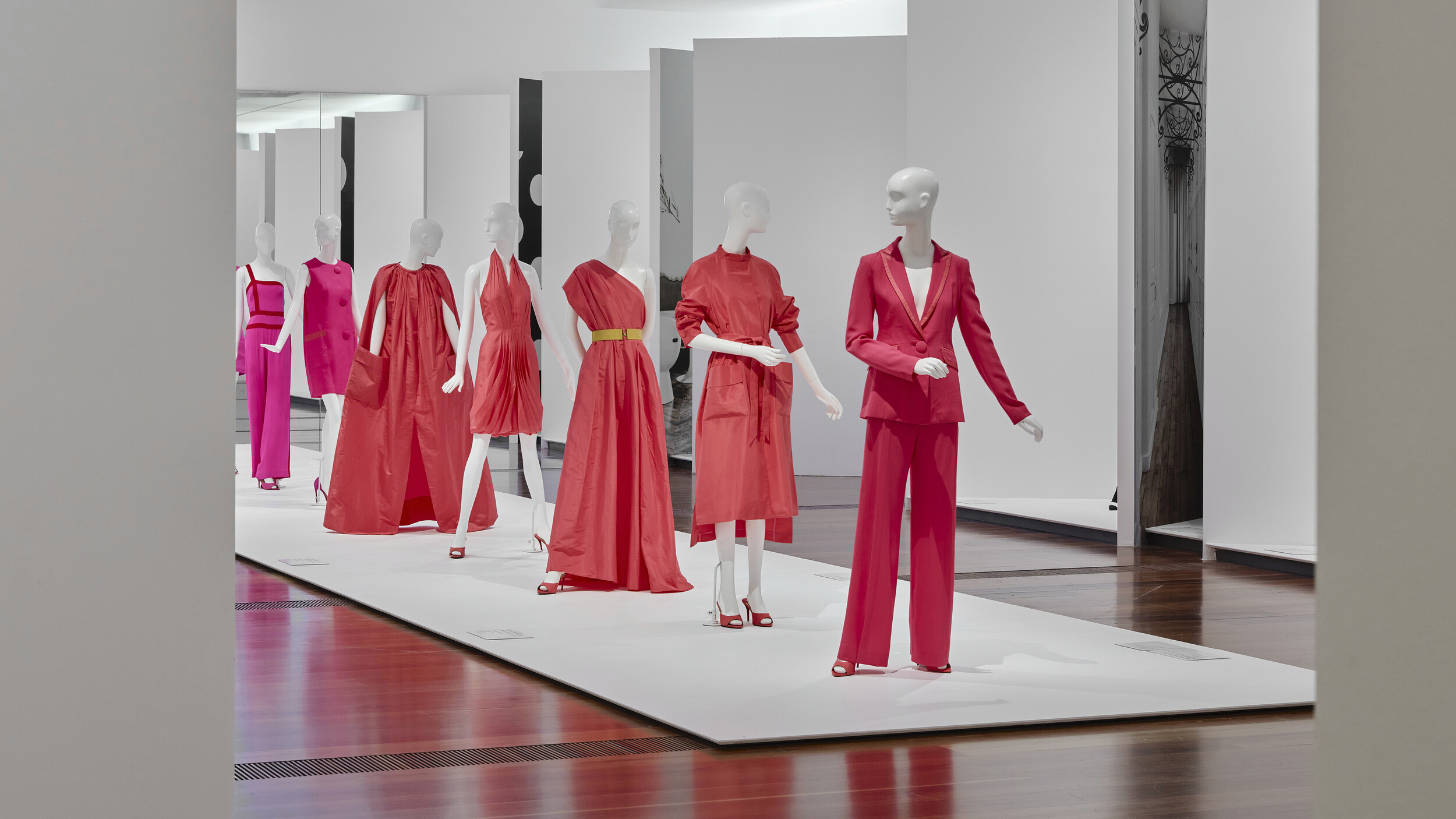
Installation view of Martin Grant at The Ian Potter Centre: NGV Australia, Melbourne. Photo: Sean Fennessy
As the exhibition unfolds, Grant’s career blossoms—there is a refining of style and an embrace of softer silhouettes—but always with the essential restrained elegance. In the transitional space between the first and second room, the clothes are displayed alongside images of icons who have been dressed by Grant, from Catherine Baba to Lady Gaga. A black and white paparazzo shot of Lee Radziwill (Jackie Kennedy’s arguably more stylish younger sister) was a surprise, immediately connecting the boy from Blackburn to the Bouviers, and by extension, the mythology of American Royalty. But the subversive experiments of young Grant fall away in the second room. A stretch of garments, imitating a runway of suits in varying shades of pink, shows the multiplicity of his style and his willingness to experiment with variations in form. If the first room placed the viewer in Grant’s atelier, now we are on the runway. The NGV’s senior curator of fashion and textiles, Katie Somerville, has subtly underscored the work on show. Though the exhibition follows a sequential path, the clothes themselves are not relegated to a strict chronological order. A dress from the ’90s is shown with a more recent piece. While fashion changes, Grant’s mission has always been one of personal definition and a gentle carving out of his vision.
However, when looking at a fashion exhibition—the exhibiting of clothes from a brand—the question of commerciality is undoubtedly raised. A pernicious question arises: does it function as a glossy, state-endorsed act of marketing or a show that allows complex curatorial questions? For public galleries, the challenges of putting on a fashion exhibition for a brand are immediately clear. Fashion brands are businesses after all. Fashion is a game of money, and public galleries and museums (we hope) are the grounds for intelligent curatorial exploration that seeks to cut through marketing spin and develop some new narrative within this. Designers invariably want praise for their work, without the necessary scrutiny of how garments intersect with the social or political framework in which they exist. For instance, in 2019, a major retrospective of the House of Dior was held at the Victoria and Albert Museum. The dresses were beautiful, of course, but eventually the gaps, concealments and obviations of the history of the house spoke louder—there was a history of enduring cultural appropriation and racism that was in jarring conflict with a story about the brand’s connection to social liberation movements. Noticeably, there was meagre curatorial engagement with the moment when John Galliano left the house in 2011, after being found guilty of racist and antisemitic abuse. These are fascinating grounds for what could’ve been a different curatorial angle, one that dared to pose challenging new questions about the relationship between fashion and politics. A slew of exhibitions showing the work of Chanel have had to wrangle with the complex legacy of the house’s namesake (Coco Chanel’s Nazi connections), though in the NGV’s own exhibition in 2021, Chanel: Fashion Manifesto, the airbrushing was thankfully not too much. Often, critics and fashion curators argue the clothes should speak for themselves, but we know this answer is insufficient. Clothes can’t speak for themselves, and that is the very reason they are in galleries. If fashion is about myth, then its position in a gallery setting should be about locating its truth. Continually, the issue with the majority of recent fashion exhibitions is that the exhibition becomes an extension of marketing, some polite limb of their social narrative that must serve the commercial interests of the house. The result is a glossing over of the controversial or distasteful realities that go along with business.
Thankfully, Grant’s career isn’t marred by controversy. But even then, we have to ask where the brand ends and where the designer begins. This question simmers beneath the satin, not only in Grant’s rooms, but for every fashion exhibition. In a complex way, the risk of a marketable limelight is eschewed by Grant’s enduring independence. There is an old-world quality to the way he operates his business. In 2003, he was offered the job as Creative Director at Celine and later Givenchy, positions he turned down to work on his label. There is an admirable control that Grant still wields over his company, evoked through the intelligent and astute curation of this survey of his work to date.
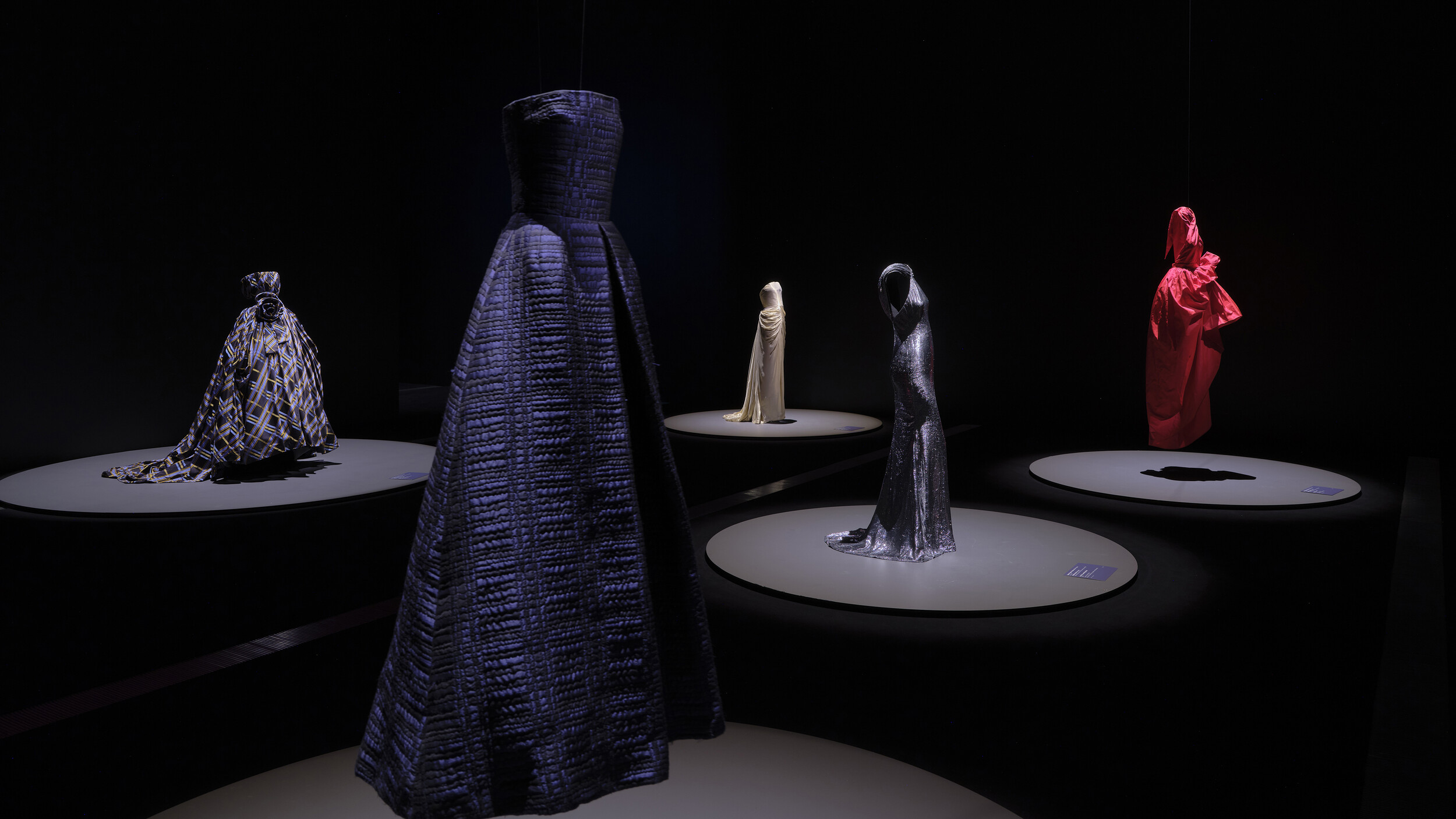
Installation view of Martin Grant at The Ian Potter Centre: NGV Australia, Melbourne. Photo: Sean Fennessy
The concept of a “fashion exhibition” is relatively new. Diana Vreeland, a former Vogue editor who curated the first exhibitions of the Costume Institute in the 1970s, described the purpose of fashion exhibitions as fundamentally distinct from those of art. In an interview in 1981, she mused that art and fashion go in different directions, with their missions leaving at crossing roads. When designing a show for the Costume Institute at the Met, she said that she never thought of the art upstairs. The question of whether fashion can be art is a tired one; it is art, and it isn’t. That is to say: it isn’t always art, but it can be, if the right people say it is. The predominance of the Costume Institute, largely through the froth of social interest in the Met Gala, has spurred a reappraisal of fashion as fodder for galleries over the past twenty years. What makes fashion exhibitions a popular choice for galleries in getting people in the door is the singular distinction of attainability that fashion holds over art. Many of us will never own a Rothko, but if we save our pennies, we might just be able to buy a coat from McQueen, and thus attach ourselves to the artistic mythos of its creator. It is this quality, where commerciality serves as a connective tissue between gallery and audience, that marks fashion exhibitions as valuable attractions for visitors. These shows invariably become social histories, reflecting some epoch, some moment, some innate desire or cultural aspiration to own such things.
This retrospective of Martin Grant’s work is a beautiful showcase of beautiful clothes. That is undeniable. For the visitors, maybe in a world as acerbic as this, that is enough. But what makes the exhibition fascinating is the enduring thread of Grant’s obsessions, his undying focus on codes that feel distinctly his. Where current fashion is characterised by a game of musical chairs of French houses owned by large conglomerates, his work and process feel like that of a designer of a lost generation. A singular creator, he appears fascinated by a beauty that no longer exists. If any part of the exhibition is a testament to this, it is the final room, where Grant’s most theatrical work hangs seemingly floating within the darkened space, like gleaming lolly wrappers taking to the night sky. This final darkened room becomes a coda for making visible Grant’s mission—the pursuit of a certain elegance that seems woefully absent in today’s world.
Sebastian Moore is an emerging art historian, curator and writer from Naarm/Melbourne.
